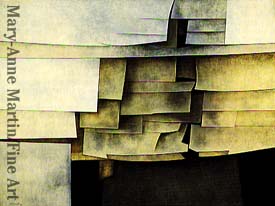Gunther Gerzso
80th Birthday Show
|
 |
|
Gunther Gerzso
Dore Ashton
|
|
| page 1 | page 2 | page 3 | page 4 |
|
| Dedicated to the memory
of Marta Traba
|
|
Tautology: Gerzso is Gerzso and nothing else. So wrote his friend Octavio Paz
who with a great poet's concision characterized Gerzso's work with the
epithet: "The icy spark." For more than three decades Gerzso has held the
attention of those who recognize the singular consistency of his paradoxical
approach. The smouldering colors, so brilliantly heightened, inexplicably give
off a glacial emanation. In his ever unfolding vistas, in which there are
inescapable hints of the majesty of the Mexican landscape, there is a light
distilled, or rather, invented by the artist to lure the imagination beyond or
behind the scenes into uncharted spaces. But (and there is always a but here)
the artist resists the grandiose. Who wishes to know these paintings must
know them in their details. Each surface is worked with minute transitions;
each line is modelled to its finest nuance; each color is built for its
maximum opacity, its most expressive density. The icy spark must sustain
itself in the time it takes to build these sensitive surfaces, and the time it
takes to scan them for their embodiment of all that has passed in Gerzso's
mind and sensibility.

14. Southern Queen, 1963 |
So Gerzso is indeed Gerzso and nothing else,
but how did he come to be Gerzso? Putting aside the natural endowment of
all artists of value, there were certain circumstances that can be said to
have prompted his choices. For one thing, although he was born in Mexico, he
spent his formative years abroad. He had a cosmopolitan upbringing that
brought him into contact with people, places and ideas that spoke to his
temperament. He spent several years in the Swiss home of an uncle who had
been a pupil of the great art historian Wölfflin. He even met the artist Paul
Klee with whom, I believe, he has affinities-Klee who spoke of "the
prehistory of the visible" and whose lectures and assignments to his pupils
included one on "Earth, water and air." Although still a boy, Gerzso was
precocious. He quickly recognized the importance of the writings of Le
Corbusier given to him at his uncle's house. Not so strange an attraction if
we think of Corbusier's sculptural flights as epitomized at Ronchamp. The
tectonic impulse was natural to Gerzso and has played a
strong part in his becoming Gerzso. Another impulse that I suspect was just
as natural to his temperament was generated in Switzerland when the youth
encountered an Italian actor and set designer who fired him with the
ambition to create for the theater. Subsequently, the theater and later the
cinema not only provided Gerzso with a means of support for many years, but
also sharpened his perceptions. The man who designs the discrete world that
each theater set must represent is required to rationalize illusion. His whole
task is to abstract and accentuate in order to make a convincing whole. He
must draw from the world of experience those elements that can give an
absolute illusion of a place and a time. Very often those who write about
Gerzso's work, in which he makes extensive use of overlapping planes, invoke
the language of Cubism as the source. I think rather that it is Gerzso's long
experience with flats and scrims that has tempered his pictorial idiom.
|
| continued |
|






|











